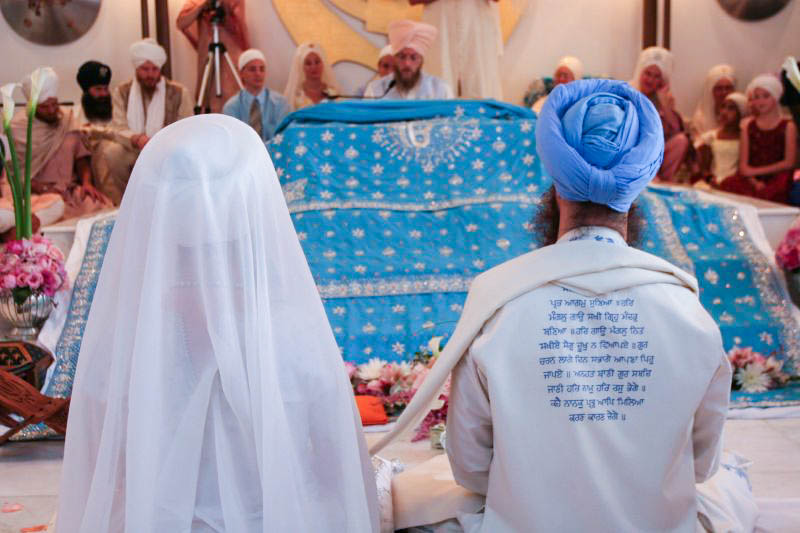In August of 2020, Kaur Life hosted a virtual retreat of 200 Kaurs. It was amazing! Since then, many people have asked us for guidance on how to conduct their own online events. Here are a few notes that might be able to help you! We are excited for your retreat – don’t forget to invite us!
Rough Timeline
Two Months Prior
Organizing
- Create a planning team
- Create a shared cloud drive
- Pick a date and time
- Be mindful of other camps/holidays/time zones
- Pick a target and max number of attendees
- Budget
- Zoom pro
- Mentimeter
- Guest speaker honorariums
- Marketing
- Will you have a registration fee?
Retreat Ideas
- Pick a camp theme, purpose, and audience (what demographics are you targeting?)
- If you want to include folks who are under the age of 18, you need parent/guardian permission slips.
- Determine which workshops to have
- Determine who will be the point person for each workshop and contact person per guest speaker
- Determine guest speakers
- Recruit guest speakers
- Create a schedule
People
- Determine retreat co-sponsors
- Collect speaker’s contact info, bios, and headshots
- Reach out to sevadars and have them sign up for sevas:
- Pre-retreat branding and marketing
- Small group discussion facilitators
- Note taker (several per workshop)
- Divan back ups (If retreaters are doing divan sevas like ardas or kirtan, have a sevadar as a backup in case the retreater is not able to do it).
- Fact checker
- Speaker intros
- Approve people in waiting rooms (divide participant list alphabetically and assign to several sevadars).
- Screen share control/ Zoom spotlight controller
Promotion:
- Advertise
- Social media/website/email list
- Send out “Save the Dates”
- Showcase guest speakers
- Feature workshops
- Social media/website/email list
One Month Prior
- Registration opens (for 1 week)
- Use a platform that automatically sends a confirmation email
- Add an “opt-in” check box for retreaters be added to your email list serve
- Registration closes (Make sure to close the registration form, don’t just delete website links).
- Create WhatAp Groups of each workshop team and sevadar group etc
- Create fun stuff
- Zoom backgrounds
- Instagram stickers/filters
- First draft of workshops due from guest speakers
- Conduct a mock retreat
- Collect any materials speakers want distributed to retreaters
- Create a highly detailed schedule for planning team
- Determine how to deal with overflow and the waiting list
Retreat Month
- Final workshop materials due from guest speakers
- Make a program
- Final schedule
- Speaker profiles
- Retreater profiles
- Workshop materials
- Guidelines and ground rules
- Roster
- Email everyone the info they need:
- Guest Speakers
- Speakers guide
- Zoom safety
- Participants asking question document
- Instagram stickers
- Workshop materials
- Welcome packet
- Roster
- Schedule
- Note taking docs
- Zoom backgrounds
- Important phone numbers/contact of planning team
- Sevadars
- Instagram stickers
- Workshop materials
- Welcome packet
- Roster
- Schedule
- Note taking docs
- Zoom backgrounds
- Small group docs
- Important phone numbers/contact of planning team
- Retreaters
- Instagram stickers
- Workshop materials
- Welcome packet
- Roster
- Schedule
- Small group docs
- Important phone numbers/contact if they need help
- Guest Speakers
- Retreat!
1 Week After Retreat
- After action review with planning team
- Create feedback surveys for retreats, sevadars, and guest speakers
- Thank you email to everyone
- Feedback survey
- Share post-retreat materials (like notes and recordings)
- Pay guest speakers
- Write articles on each workshop and publish recap on website
- Share survey
- Share feedback with guest speakers
Lessons Learned
- Be mindful of not being USA centric
- Obtain permission to record (and subsequently share) sessions from each guest speaker and disclose which sessions will be recorded to retraters prior to the session.
- Obtain permission to screenshot sessions (and subsequently share) from each guest speaker.
- Clear, frequent, and transparent communication with retreaters, guest speakers, and sevadars is appreciated.
- Give trigger warnings (if applicable) at the beginning of each session.
- Be mindful not to use gendered or Judeo-Christian language.
- Create your own Gurbani interpretations (vs copying straight from SikhiToTheMax) so you can edit words like “He” or “Lord”
- Re. Zoom Breakout Rooms –
- Using name and emails, we predetermined breakout rooms based on age. Thus one of our sevadars had to manually put people in these breakout rooms. We wanted these groups to be consistent throughout the retreat so people could build relationships. If you want random groups, then Zoom has a feature to do this automatically.
- Age Groups
- We got feedback that some people liked that it was all ages while others felt like we weren’t able to cater the material well enough to address the varying life stages.
- All women over the age of 25/30 (those who have aged out of traditional camps) loved being included.
- Registration
- We asked people from the same house to register separately so we could put them in their own breakout rooms. So, each person would need a unique way to join Zoom (ie not sharing a laptop unless they were okay being in the same breakout room).
- Waiting rooms
- To prevent any trolls from entering, we put everyone in the Zoom waiting room before admitting them into the session. Thus, it is important that people’s Zoom usernames are the same as what they registered with, otherwise we don’t know if they are a legit retreater or an intruder. This can be challenging if people are using a nickname, a family Zoom account, or their partner’s account. Communicate this with retreaters.





No Comments